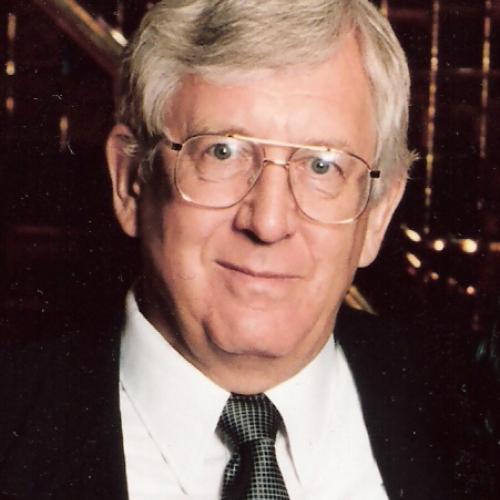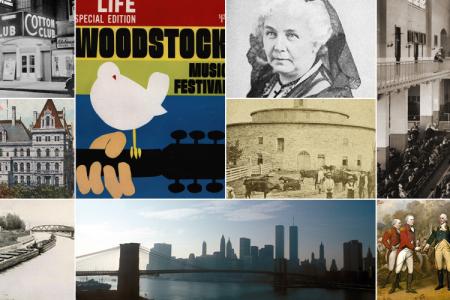
Chief Justice John Jay Explains New York State's First Constitution
2017 is New York State's 240th birthday! The first State Constitution was finished and approved in Kingston on April 20, 1777, and promulgated two days later by being read from the courthouse steps in that city. The document had been written on the fly by a hastily elected Provincial Congress, which had renamed itself the Convention of Representatives of the State of New York. The group had moved from New York City to White Plains to Fishkill and finally to Kingston to keep away from encroaching British forces.
The new Constitution established the framework for the new state government. It proved to be a versatile and durable document and stayed mostly intact until the first state constitutional revision convention in 1821. It was a partial model for the U.S. Constitution in 1787.
John Jay, an eloquent and very capable lawyer from New York City, was the lead author of the document. Moving from constitution-maker to implementer, he became Chief Justice of the new state that same year.
The Constitution's lead architect interprets the new document for the people. The war raged on -- British forces advanced up the Hudson in the fall and burned Kingston in October. Jay and other officers of the new government fled and later reassembled in Poughkeepsie. But even in the face of the British threat, the new Chief Justice wanted a forum to explain the rationale and importance of the new document and to put it in context through articulation of the broader principles that were guiding the Revolution.
He found that opportunity when he assembled the new state's first grand jury at Kingston in September 1777 to investigate counterfeiting.
Jay had a broad purpose in mind when he rose to address the jury at its first meeting on September 7. Before turning to the issue at hand, counterfeiting, he took the opportunity to explain why the Revolution had occurred, what was at stake, and the principles of the new state constitution which he and his colleagues had issued in the same city five months earlier.
It was the first public statement by the chief writer and new Chief Justice about the new document and its significance. His "Charge to the Grand Jury of Ulster County" was distinguished by its insights and elegance. It was reprinted in the newspapers of the day and by the new state itself and took on the character of an official state paper.
A summary of key points:
We have thrown off repressive control of a foreign country. Jay emphasized that the Revolution was really about throwing off the bonds with Britain, which shifted from being a benevolent mother country to a despotic overlord. In effect, it had become tantamount to a foreign nation. It represented the old world. Its former colonies, particularly New York, were different, fresh in their outlook, determined to go their own way. That was a fundamental insight into why the Revolution began. "The time will now never arrive when the prince of a country in another quarter of the globe will command your obedience, and hold you in vassalage," the new Chief Justice said. "His consent has ceased to be necessary to enable you to enact laws essential to your welfare. Nor will you in future be subject to the imperious sway of rulers instructed to sacrifice your happiness whenever it might be inconsistent with the ambitious views of their royal master."
New York is organized to fight on its own but it is part of a broader coalition of thirteen former colonies. Jay sometimes referred to New York's autonomy and independence but more often he stressed the new state's making common cause with the other twelve former British colonies. He posed the point of their common origin in the very long question: "Will it not appear extraordinary that thirteen colonies, the object of their [British] wicked designs, divided by variety of governments and manners, should immediately become one people, and though without funds, without magazines, without disciplined troops, in the face of their enemies, unanimously determine to be free, and, undaunted by the power of Britain, refer their cause to the justice of the Almighty, and resolve to repel force by force, thereby presenting to the world an illustrious example of magnanimity and virtue scarcely to be paralleled?"
Americans are the first people in history to assert how they will govern themselves. Jay's "Charge" emphasized that the new governments being set up in New York and the other twelve new states were unprecedented, a radical break from anything in the past, a new departure for humankind. "The Americans are the first people whom Heaven has favoured with an opportunity of deliberating upon, and choosing the forms of government under which they should live."
The Constitution establishes self-government. Jay reiterated that under the new state constitution state government derived all its authority from the people it governed. Government would be subservient to the people, not the other way around. "Your lives, your liberties, your property, will be at the disposal only of your Creator and yourselves. You will know no power but such as you will create; no authority unless derived from your grant; no laws but such as acquire all their obligation from your consent."
Freedom of conscience and religion. Jay emphasized what was in the Constitution by way of personal protection: conscience and religion. "Adequate security is also given to the rights of conscience and private judgment. They are by nature subject to no control but that of the Deity, and in that free situation they are now left. Every man is permitted to consider, to adore, and to worship his Creator in the manner most agreeable to his conscience. No opinions are dictated, no rules of faith prescribed, no preference given to one sect to the prejudice of others."
Courts will guarantee legal rights and justice. The Chief Justice noted that this grand jury in effect was launching the new state's judicial proceedings. Everyone had a right to justice and would receive equitable treatment in the courts, he stressed. "No person in this State, however exalted or low his rank, however dignified or humble his station, but has a right to the protection of, and is amenable to, the laws of the land; and if those laws be wisely made and duly executed, innocence will be defended, oppression punished, and vice restrained.
Read the constitution. The State Constitution was brief (about 6,500 words, not counting the Declaration of Independence which was included as a prelude) and written in clear, understandable language. It was meant to be read, studied, and deliberated. "Every member of the State ought diligently to read and to study the constitution of his country, and teach the rising generation to be free," Jay said. By knowing their rights, they will sooner perceive when they are violated, and be the better prepared to defend and assert them."
"Country" is a striking term here. Jay apparently meant the new state, which was somewhat akin to a country. But he was also eluding to the larger confederation of thirteen states, in the process of becoming a nation, though not one with a constitution yet. Even the Articles of Confederation had not yet been adopted when Jay spoke. That happened the next year, 1778.
In his reference to "country," Jay was unintentionally previewing something of his own future. He partnered with John Adams and Benjamin Franklin to negotiate the 1783 treaty with Britain ending the war. He served as Secretary of Foreign Affairs for the confederation government. A supporter of the movement that led to the formulation of the U.S. Constitution in 1787, he wrote five of the essays in "The Federalist" series which supported ratification of the document. He served as first Chief Justice of the U.S. Supreme Court, 1789-1795, reprising on the national level his service as New York's first Chief Justice. Returning to New York, he served as the state's second governor, 1795-1801.
Jay's "Charge" is entirely laudatory and positive. It is an impressive advocacy and educational piece. He was obviously proud of the new document and wanted to share that pride with other New Yorkers. He did not call attention to any of the compromises in the document. He did not mention the legal rights of women, which were not addressed. He did not allude to slavery, which the Constitution left intact despite the pleas of Jay and a few others as the document was being completed. The Chief Justice did not note that, while the document guaranteed some personal freedoms as noted above, it did not have a Bill of Rights. That omission was deliberate—Jay and his colleagues wanted the new State of New York to have lots of leeway in prosecuting Loyalists who opposed the revolution. The legislature added a bill of rights by statute some years later.
Jay is often remembered for his stellar national service. His role as the chief writer of New York's first state constitution and its first Chief Justice is eclipsed. His "Charge to the Grand Jury of Ulster County," once considered an important state document, widely read and reprinted, is not well known today.
But as New Yorkers contemplate in 2017 whether to hold a new constitutional convention, Jay's "Charge" is worth reading for its explanation of what constitutional government really means.
You can read John Jay's "Charge to the Grand Jury of Ulster County" at page 158 of this document.
Dr. Bruce W. Dearstyne is an educator and historian in Guilderland, New York. He is the author of The Spirit of New York: Defining Events in the Empire State's History, published by SUNY Press.



